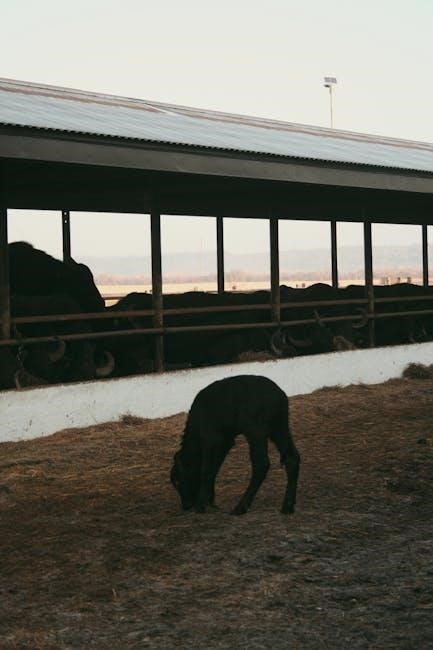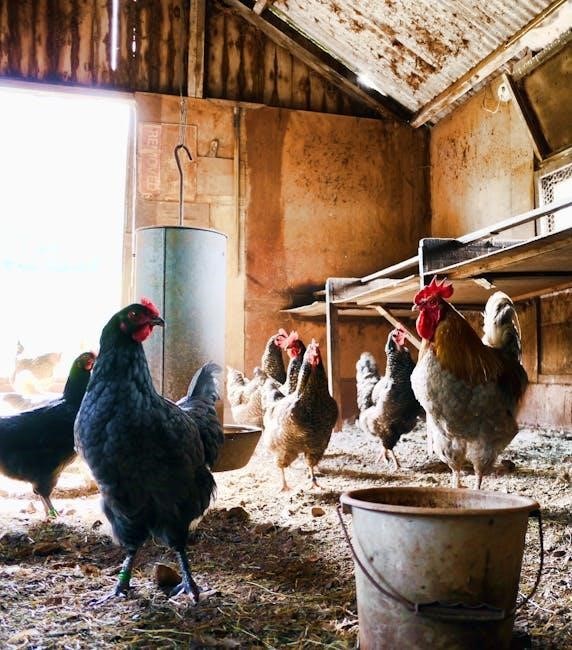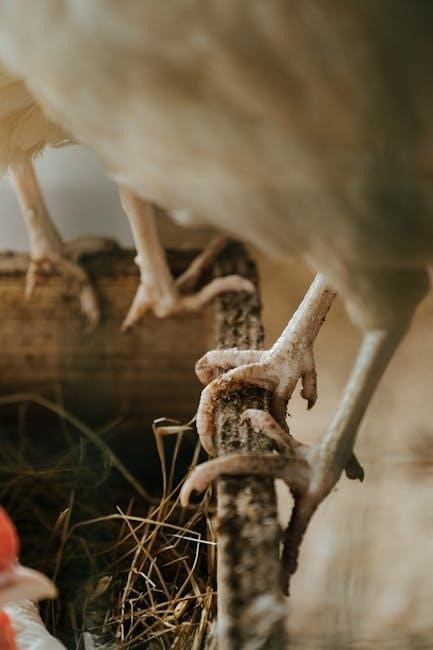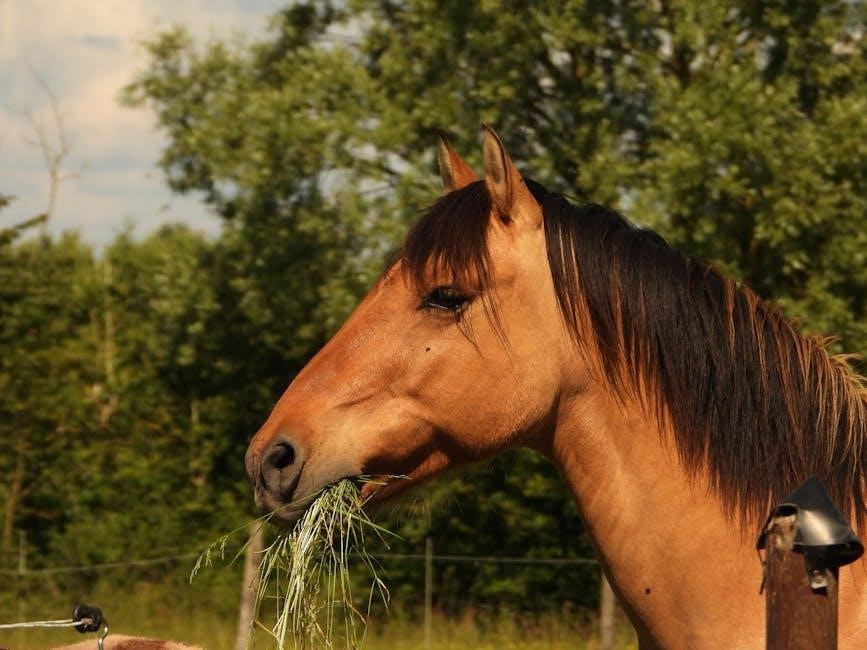Open Farm Feeding Guide: A Comprehensive Overview
Welcome to the comprehensive guide for feeding your beloved dog with Open Farm’s nutritious recipes. This guide provides essential information for puppies, adults, and gestating or lactating dogs. Learn the proper methods to ensure optimal health and well-being through every life stage.
Open Farm is committed to providing pets with ethically sourced, nutritious food. Their philosophy revolves around transparency, sustainability, and animal welfare, ensuring that every ingredient is traceable and of the highest quality. Open Farm collaborates with farmers and producers who share their dedication to responsible farming practices.
The brand’s commitment extends beyond just food; they aim to minimize their environmental impact through eco-friendly packaging and sustainable sourcing. Open Farm believes pets deserve the best, and that starts with understanding where their food comes from and how it’s made. This commitment to quality and ethics sets Open Farm apart in the pet food industry.
Open Farm offers a range of recipes tailored to meet the unique needs of dogs at every life stage. From puppyhood to adulthood, their formulas are designed to support optimal health and vitality. By choosing Open Farm, pet owners can trust they’re providing their companions with food that aligns with their values and promotes a healthier planet.

With Open Farm, you’re not just feeding your pet; you’re contributing to a better world. Their dedication to ethical sourcing and sustainable practices makes them a trusted choice for conscious pet parents.
Transitioning to Open Farm Food
Introducing your pet to Open Farm food requires a gradual transition to avoid digestive upset. A slow and steady approach over 7-10 days is generally recommended. This allows your dog’s digestive system to adapt to the new ingredients and nutrient composition.
Begin by mixing a small amount of Open Farm food with your dog’s current food. On days 1-3, use approximately 25% Open Farm food and 75% of their existing food. This initial phase introduces the new food gently, minimizing potential digestive issues.
Over the next few days, gradually increase the proportion of Open Farm food while decreasing the amount of the old food. On days 4-6, aim for a 50/50 mix. This allows your dog’s system to further adjust to the changing diet.
By days 7-9, you can increase the Open Farm food to 75% and reduce the old food to 25%. This final stage prepares your dog for a complete transition to Open Farm. Monitor your dog’s stool and overall well-being during this period.
If your dog shows any signs of digestive upset, such as diarrhea or vomiting, slow down the transition process. Once fully transitioned, your dog can enjoy the full benefits of Open Farm’s nutritious and ethically sourced ingredients.
Understanding the Transition Period (7-10 Days)
The 7-10 day transition period is crucial when introducing Open Farm to your dog’s diet. This timeframe allows their digestive system to adapt gradually, minimizing the risk of digestive upset. Abrupt changes in food can lead to issues like diarrhea, vomiting, or loss of appetite.
During this period, you’re essentially retraining your dog’s gut to process a new set of ingredients. Open Farm uses high-quality, wholesome foods that may differ significantly from your dog’s previous diet. The transition allows the gut microbiome to adjust, ensuring efficient digestion and nutrient absorption.
The slow introduction also helps identify any potential sensitivities or allergies to specific ingredients in the new food. By gradually increasing the proportion of Open Farm, you can monitor your dog for any adverse reactions. If you notice any issues, consult with your veterinarian.
Think of it like introducing a new exercise routine; you wouldn’t jump straight into a marathon. Instead, you’d gradually increase the intensity and duration of your workouts. The same principle applies to your dog’s diet. Patience and observation are key to a successful transition.
Remember to monitor your dog’s stool consistency and overall energy levels throughout the transition. A smooth transition will ensure your dog enjoys all the benefits of Open Farm without any digestive discomfort.
Puppy Feeding Guide
Puppies require specific nutritional needs to support their rapid growth and development. Open Farm offers puppy-specific formulas designed to meet these requirements, ensuring your puppy receives the right balance of protein, fats, and carbohydrates. Proper feeding is essential for building strong bones, muscles, and a healthy immune system.

Choosing the right Open Farm puppy formula is the first step. Look for formulas that are specifically labeled for puppies, as these will have higher levels of essential nutrients like DHA for brain development and calcium for bone growth. Always check the ingredient list to ensure it contains high-quality protein sources and avoids artificial additives or fillers.
Puppies need to eat more frequently than adult dogs due to their smaller stomachs and higher energy demands. A consistent feeding schedule is crucial for establishing good eating habits and preventing overeating. Divide their daily food allowance into multiple meals, typically three to four times a day, especially for younger puppies.
As your puppy grows, you’ll need to adjust their food portions accordingly. Open Farm provides feeding guidelines based on your puppy’s weight and age. Regularly monitor their weight and body condition to ensure they’re growing at a healthy rate. Avoid free-feeding, as it can lead to obesity and other health problems.
Remember to provide fresh, clean water at all times. Proper hydration is just as important as proper nutrition for your puppy’s overall health and well-being.
Feeding Schedule for Puppies
Establishing a consistent feeding schedule is vital for your puppy’s health and well-being. Puppies have high energy needs and smaller stomachs, requiring frequent meals throughout the day. A structured schedule helps regulate their digestion, prevents overeating, and aids in house training.
For young puppies, typically between 8 to 12 weeks old, aim for four meals a day. This frequent feeding provides a steady stream of nutrients to support their rapid growth. As they mature, gradually reduce the number of meals. By the time they reach six months, most puppies can transition to three meals a day.
Consistency is key. Try to feed your puppy at the same times each day. For example, you could offer meals at 7 AM, 12 PM, 5 PM, and 10 PM for a young puppy. As they grow, adjust the schedule to 7 AM, 1 PM, and 7 PM. This predictability helps regulate their digestive system and makes house training easier.

Use the Open Farm feeding guide as a starting point, but remember that every puppy is different. Monitor your puppy’s body condition and adjust the amount of food accordingly. If your puppy seems hungry after finishing their meal, you may need to increase the portion size slightly. Conversely, if they’re leaving food in their bowl, reduce the amount.
Always provide fresh water alongside each meal. Clean their water bowl daily to prevent bacteria growth. Remember, a consistent feeding schedule is a cornerstone of good puppy care.
Adult Dog Feeding Guide
Once your dog reaches adulthood, their nutritional needs change. Adult dogs require a balanced diet to maintain their weight, energy levels, and overall health. Open Farm offers a range of recipes formulated specifically for adult dogs, providing the necessary nutrients to thrive.
The Open Farm adult dog feeding guide provides recommendations based on your dog’s weight and activity level. These guidelines are a starting point, and you may need to adjust the amount of food based on your dog’s individual needs. Monitor their body condition regularly to ensure they are maintaining a healthy weight.
A healthy adult dog should have a visible waistline and you should be able to feel their ribs without excessive fat covering them. If your dog is overweight, gradually reduce their food intake and increase their exercise. If they are underweight, increase their food intake and consult with your veterinarian to rule out any underlying health issues.
Consider your dog’s activity level when determining their food portions. Active dogs require more calories than less active dogs. Adjust the feeding amount accordingly to meet their energy demands. Open Farm recipes are made with high-quality ingredients to deliver optimal nutrition, regardless of activity level.
Always provide fresh, clean water for your dog. Monitor their water intake and consult with your veterinarian if you notice any significant changes. Remember, proper nutrition is essential for a long and healthy life for your adult dog.
Feeding Frequency for Adult Dogs (Two Meals a Day)
For adult dogs, a feeding schedule of two meals a day is generally recommended. This approach helps maintain consistent energy levels throughout the day and aids in digestion. Dividing the daily food portion into two meals prevents your dog from feeling overly hungry or full at any given time.
Ideally, these meals should be spaced approximately 10-12 hours apart. For example, you might feed your dog once in the morning and again in the evening. Consistency in timing is beneficial for your dog’s digestive system and can help regulate their metabolism.
While two meals a day is a common recommendation, some dogs may benefit from a different feeding frequency based on their individual needs and activity levels. Consult with your veterinarian to determine the best feeding schedule for your dog.
Consider your dog’s breed, age, and health condition when deciding on a feeding schedule. Some breeds may be prone to bloat, and smaller, more frequent meals may be recommended. Senior dogs may also benefit from smaller, more frequent meals to ease digestion.
Regardless of the feeding frequency, it’s crucial to monitor your dog’s weight and adjust their food portions accordingly. Open Farm’s feeding guidelines provide a starting point, but you may need to fine-tune the amount of food based on your dog’s individual needs.
Remember to always provide fresh, clean water for your dog, especially after meals. Maintaining a consistent feeding schedule and providing a balanced diet with Open Farm can help ensure your adult dog stays healthy and happy.
Feeding Amounts Based on Weight and Activity Level

Determining the correct amount of Open Farm food for your dog involves considering both their weight and activity level. Active dogs require more calories than sedentary dogs to maintain a healthy weight and energy level. Open Farm provides feeding guidelines that serve as a starting point, but adjustments may be necessary based on individual needs.
Start by consulting the feeding chart on the Open Farm food packaging. This chart typically provides a range of recommended daily food amounts based on your dog’s weight. Next, assess your dog’s activity level. Is your dog highly active, moderately active, or relatively inactive?
Highly active dogs, such as working dogs or those that engage in vigorous exercise daily, will require more food than the average dog of the same weight. Moderately active dogs, who enjoy daily walks and playtime, will need a moderate amount of food. Inactive dogs, such as seniors or those with limited mobility, will require less food to prevent weight gain.
Adjust the feeding amount within the recommended range based on your dog’s activity level. If your dog is gaining weight, reduce the amount of food. If your dog is losing weight or appears to be constantly hungry, increase the amount of food.
Monitor your dog’s body condition regularly. You should be able to feel their ribs easily without a thick layer of fat. A healthy dog will have a visible waistline when viewed from above. If you are unsure about your dog’s ideal weight or feeding amount, consult with your veterinarian.
Remember that these are general guidelines, and individual dogs may have different metabolic rates and caloric needs. Pay close attention to your dog’s overall health and adjust their feeding amount accordingly to maintain a healthy weight and energy level.
Weight Ranges and Corresponding Food Amounts
Open Farm’s feeding guidelines provide a framework for determining the appropriate daily food intake based on your dog’s weight. These guidelines are typically presented as weight ranges, with corresponding food amounts listed in cups or ounces. It’s crucial to accurately weigh your dog to ensure you’re using the correct range.
For instance, a feeding chart might indicate that a dog weighing between 30-40 pounds should receive 3 to 4 cups of food per day, while a dog weighing 40-60 pounds requires 4 to 6 cups. These amounts are usually based on the standard 8-ounce measuring cup, which holds approximately 3.33 ounces of Open Farm food.
When determining the precise amount within the given range, consider your dog’s activity level and metabolism. A more active dog within the 30-40 pound range might require closer to 4 cups, while a less active dog might thrive on 3 cups. Similarly, factors like age, breed, and overall health can influence food requirements.
If your dog falls between two weight ranges, it’s generally best to start with the lower end of the higher range and monitor their body condition. Adjust the amount gradually based on whether they are gaining, losing, or maintaining a healthy weight. Regularly assess your dog’s body condition by feeling their ribs and observing their waistline.
Remember that these are just guidelines, and individual needs can vary. Always consult with your veterinarian if you have any concerns about your dog’s weight or feeding amount. They can provide personalized recommendations based on your dog’s specific needs and health status.
Special Considerations
While the Open Farm feeding guide provides a solid foundation, certain situations require adjustments to your dog’s diet. Senior dogs, for example, may have lower energy needs and benefit from a formula designed for older dogs, potentially requiring smaller portions. Conversely, working dogs or those engaged in strenuous activities may need increased caloric intake to fuel their active lifestyles.
Dogs with specific health conditions, such as allergies or sensitivities, might need specialized Open Farm recipes that exclude certain ingredients. Consult your veterinarian to identify any dietary restrictions and choose a suitable formula. Monitor your dog closely for any adverse reactions after introducing a new food, such as digestive upset or skin irritation.
For overweight dogs, a weight management formula or reduced portion sizes can help them shed excess pounds. Gradual weight loss is crucial for maintaining their health and preventing other complications. Conversely, underweight dogs may require higher-calorie foods or more frequent meals to gain weight safely.
Remember that treats also contribute to your dog’s daily caloric intake. Adjust meal portions accordingly to avoid overfeeding. Opt for healthy treat options and use them sparingly; Pay close attention to your dog’s body condition and adjust their feeding plan as needed to maintain a healthy weight and overall well-being. Regular veterinary check-ups are essential for monitoring your dog’s health and making any necessary dietary adjustments.
Safe Handling and Storage Instructions
Feeding Guide for Gestating and Lactating Dogs
Gestation and lactation place significant nutritional demands on female dogs. During gestation, especially in the later stages, increase her Open Farm food intake by 25-50% to support the developing puppies. Monitor her weight and adjust the amount accordingly to maintain a healthy body condition. Frequent, smaller meals may be more comfortable for her as the pregnancy progresses.
Lactation requires even greater caloric intake to produce milk for the puppies. Offer free-choice feeding, allowing her to eat as much as she needs to meet her energy demands. Ensure she has constant access to fresh water to stay hydrated. Choose an Open Farm formula rich in protein and essential nutrients to support milk production and puppy growth.
After whelping, continue providing free-choice feeding until the puppies are weaned. Gradually reduce her food intake as the puppies start consuming solid food. Monitor her weight and adjust her diet to prevent excessive weight gain after lactation; A high-quality Open Farm puppy formula is ideal for gestating and lactating dogs due to its nutrient density.
Consult your veterinarian for personalized recommendations based on your dog’s breed, size, and individual needs. Regular check-ups are crucial to ensure she maintains a healthy weight and receives adequate nutrition throughout gestation and lactation. Proper nutrition during these critical periods is essential for both the mother’s health and the puppies’ well-being.



